- Device with internet access and a decent display
- Camera to record what you find
- Notebook if you want to write physical notes
- Adobe InDesign/Illustrator or Google Docs/Google Slides to collate images and notes
1
Introduction
This lesson is about finding things from our past and present; both physical objects and memories, and investigating how they might be used to influence our design perspective or ‘voice’ in this project.
Equipment
Guiding questions
Think about these questions as you work your way through the lesson:
Lesson Content
We all have a story. Understanding how our stories have influenced and continue to influence our present can be a powerful tool.
It’s not always easy to take a close look at ourselves and how we have developed as a human over time, however, it creates the opportunity for conscious control over how you think and act in the present.
Part of everyone’s story is our creative heritage; our experiences with art, design, and making things.
Some people may have had a particularly creative childhood, with parents or whanau who were makers themselves. This could have meant exposure to hands-on experiences in some kind of craft, or being surrounded by the artifacts of their crafts. For others, your creative moments may have been in primary school or after school activities. You may even have some distinctly unpleasant memories of creative activities. I have a powerful memory of sitting a piano exam aged 8 and having to sight read. My teacher hadn’t realised that I had been watching her hands, listening carefully and then simply repeating her; I had never learnt to read music. I sat there paralysed having no idea what the squiggles on the sheet music meant so I simply tapped away at the keys until I could see I had suitably shocked the examiner and failed the exam. I was then screamed at by my teacher in front of the prettiest and most popular girl in the piano class. Nice.
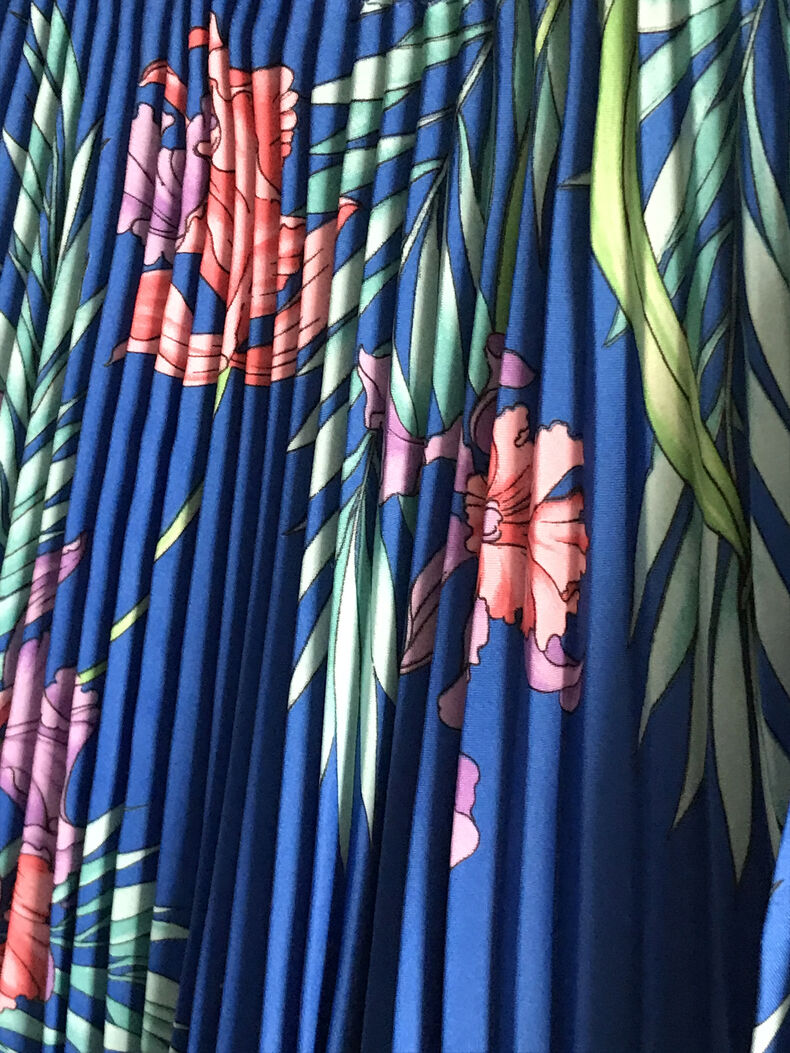
My nana's sister lived in Hawaii - her closet of muumuu was out of this world
Now, we are not suggesting this becomes an exercise in dredging up all your childhood memories. However, we want you to stop and think about your creative past. What brought you joy? When were you most happy? What did you love to do (until maybe you realised you weren’t as good at it as you would have liked)?
Remember that creativity isn’t just visual and it doesn't just belong to the arts.
Did you tell amazing stories or jokes? Did you build crazy huts and shelters? Did you watch cars drive past and turn the number plates into a maths puzzle? Did you make sculptures out of the ‘treasure draw’ (read: toilet rolls, milk bottle top and bread tags) at your nana’s? Did you like to plant seeds and watch them grow?
Did you build elaborate obstacle courses for your pet sheep to navigate and pretend you were on Tux Wonder Dogs?
Maybe that was just me.
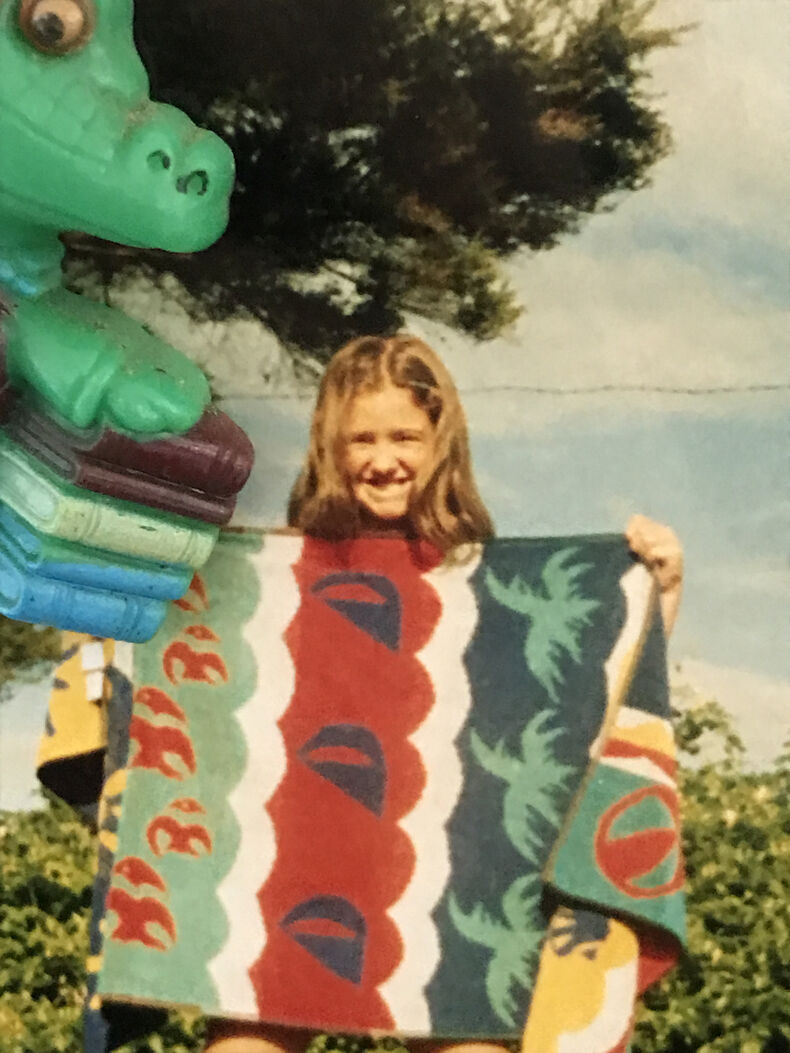
Xmas Day c.1990 - I got a towel and I was really excited about the pattern. Yip.
Let's do something!
Find and photograph the following objects, artifacts, and examples of your creative past and present. Don’t photograph everything you can find!
Pick a few, say top 5, that you have the most emotional resonance with.
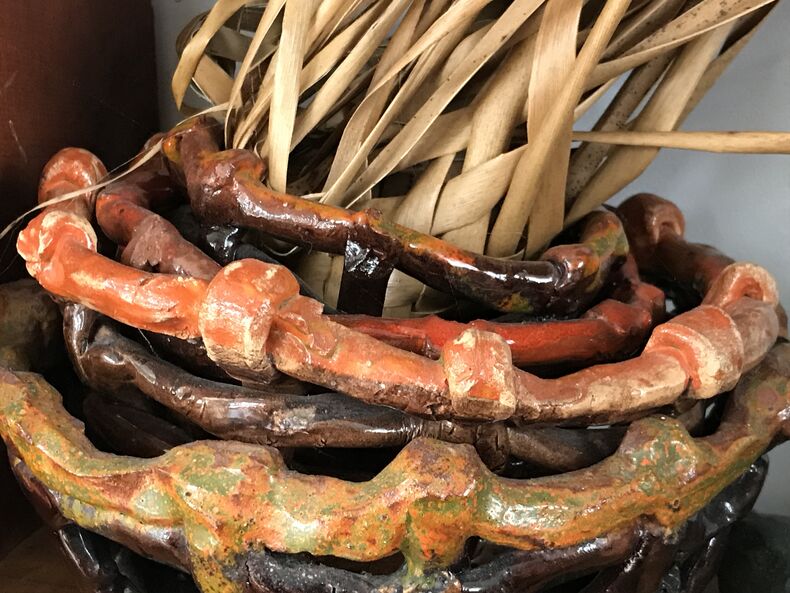
My grandmother was a wild potter
As in previous lessons, digital housekeeping is key.
We suggest storing your images like this: Google Drive>Wallpaper Project>creative heritage
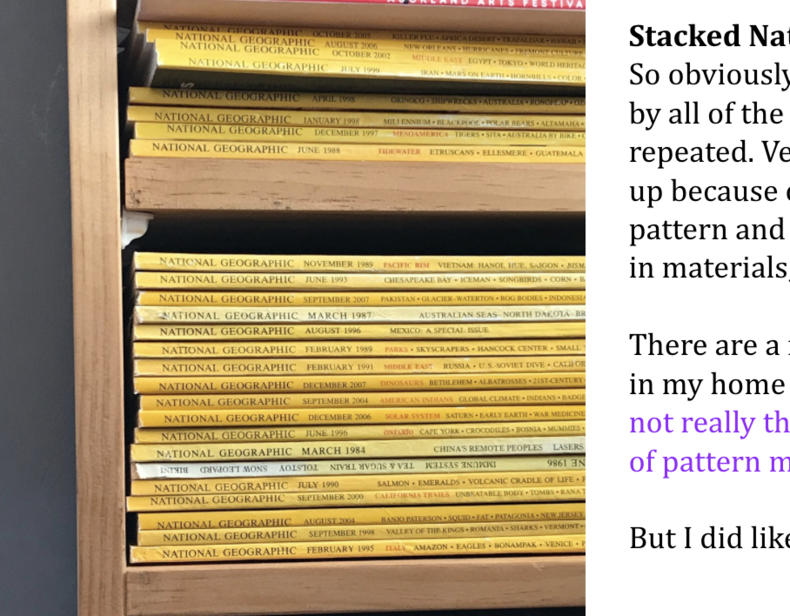
Image and notes example (I inherited a LOT of National Geographics)
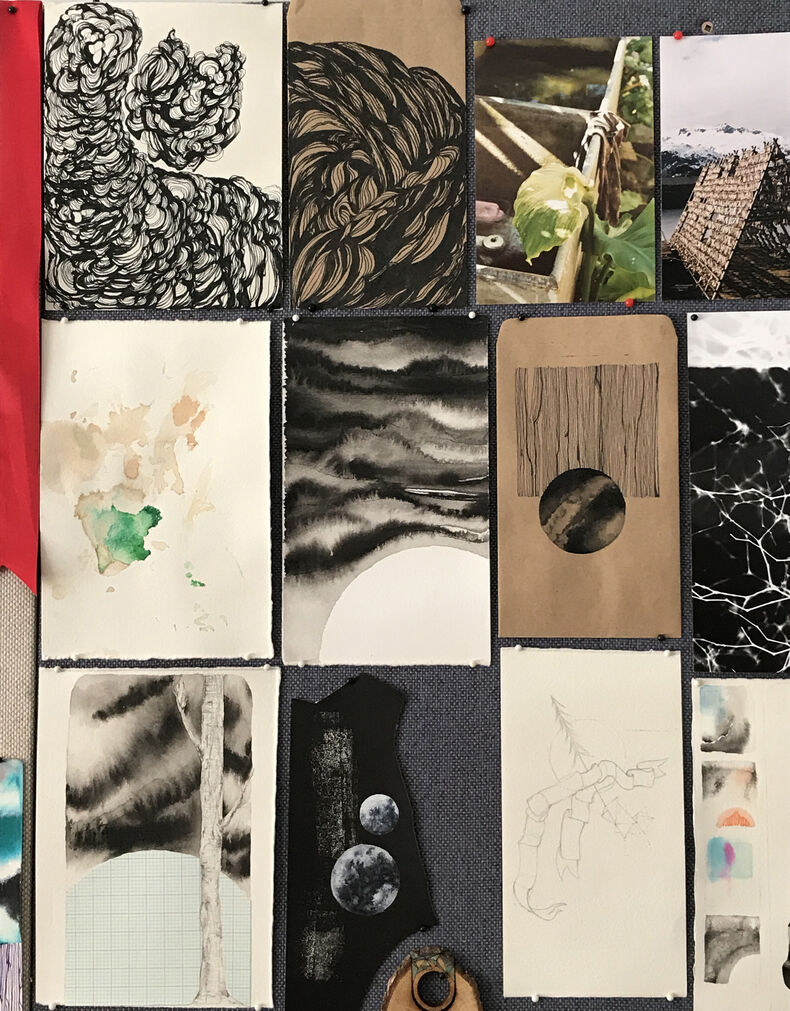
It's easier to see connections when images are side by side
Think carefully about the following questions and develop a mood board that graphically summarises all the thinking you’ve been doing. Use the images you’ve taken for this lesson as well as images of the space you intend to use.
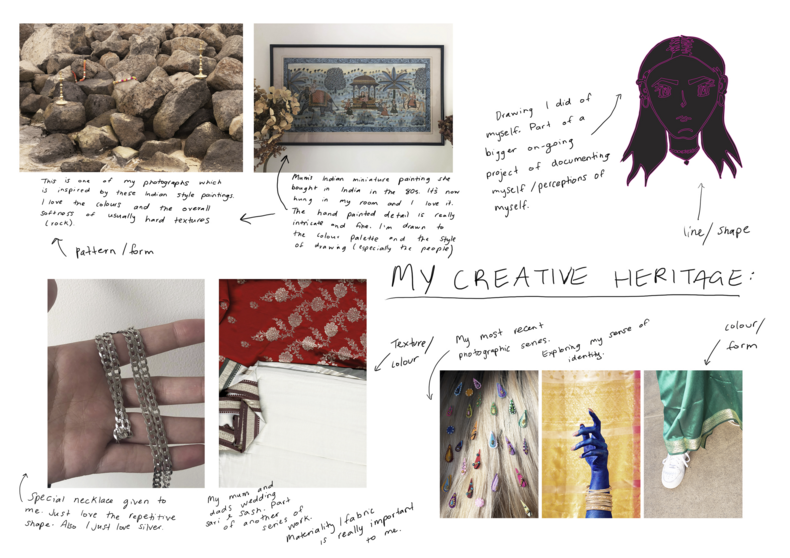
Anjuli's mood board
Exemplar